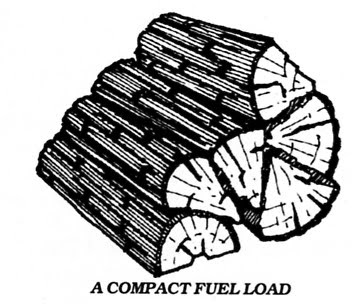
Small pieces of wood arranged loosely in a crisscross pattern burn quickly because the combustion air can reach all the pieces at once.

Larger pieces placed compactly burn more slowly because there are fewer spaces where the air can penetrate the load.
Never add just one or two pieces of wood to a fire. Three or more pieces are needed to form a sheltered pocket of glowing coals that reflect heat toward each other and sustain the fire.

No comments:
Post a Comment